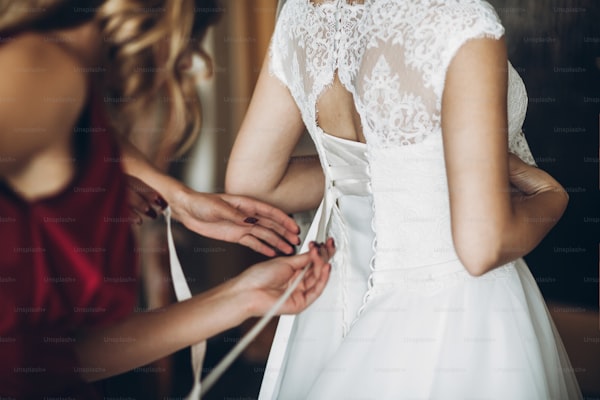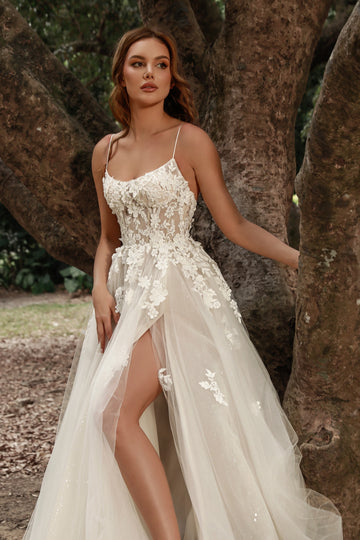Ensuring the Perfect Fit: Methods Used During the Final Fitting of a Wedding Dress
Ensuring the Perfect Fit: Methods Used During the Final Fitting of a Wedding Dress
Introduction
Choosing the perfect wedding dress is a pivotal moment in any bride’s journey. However, achieving that dream look hinges on the final fitting. The final fitting is where adjustments are made to ensure that the dress hugs every curve beautifully. This article explores the various methods used to ensure that a wedding dress fits perfectly during the final fitting. Before diving into the specific techniques used, let’s first understand the significance of the final fitting.
The Importance of the Final Fitting
The final fitting is the last chance to ensure that the wedding dress complements the bride’s unique figure. It is critical for comfort and confidence on the big day. A well-fitted dress not only enhances the bride's natural beauty but also allows her to move freely throughout the day. Many brides have questions about what to expect during this crucial appointment.
Common Questions Brides Ask
| Question | Details |
| How many fittings will I need? | Typically, most brides need between two to three fittings for perfect adjustments. |
| What should I bring to my final fitting? | Wear the undergarments you plan to use, and bring the shoes you’ll wear on your wedding day. |
| What if I lose weight before the wedding? | Communicate with your tailor; adjustments can be made up to the day before the wedding. |
| Can I add customizations during the final fitting? | Discuss any new ideas with your tailor, but be cautious about last-minute changes. |
Methods to Ensure the Perfect Fit
There are multiple methods that tailors and seamstresses employ to guarantee that a wedding dress fits flawlessly during the final fitting:
1. Accurate Measurements
Taking accurate body measurements is essential for ensuring a perfect fit. During the initial fitting, the tailor will typically take measurements of the bust, waist, hips, and even length from shoulder to hem. These should be double-checked at the final fitting to account for any changes in the bride’s body. This ensures that the dress is made to measure.
2. Sample Fitting
Often, bridal shops have sample dresses that can be tried on. Even if the size is not exact, this method allows the bride to visualize how the design will look on her body. By trying on a sample, changes can be assessed, and the tailor can make informed decisions about where and how to adjust the final dress.
3. Pinning Techniques
During the final fitting, pinning techniques play a vital role. The tailor will use pins to mark areas that need to be taken in or let out. This not only gives the bride a clear idea of where adjustments will be made but also provides a visual representation of the fit. Pinned areas should fit securely but comfortably, ensuring the bride can move.
4. Alteration of Hemlines
Setting the perfect hemline is critical for the overall appearance of the dress. The length must consider the type of shoes and the bride’s height. During the final fitting, the tailor can measure the hem based on the shoes the bride plans to wear. This is particularly important for outdoor weddings, where the dress may snag or drag on the ground.
5. Straps and Sleeves Adjustment
For dresses with straps or sleeves, adjusting the fit here can make a huge difference in comfort. If a dress has either feature, the tailor may need to alter the length and positioning. Ensuring that these elements fit correctly is crucial, as they can affect how the dress overall sits on the body.
6. Bustle Creation
A bustle allows for easy movement and dancing after the ceremony. During the final fitting, the tailor will demonstrate how to bustle the dress, showing the bride what to expect during the reception. Customized bustling techniques will be discussed, ensuring that the dress transforms accordingly.
7. Support Structure Confirmation
For dresses with structure (such as corsets or boning), it is vital to confirm that the support holds without causing discomfort. The final fitting checks that the bodice fits snugly without being too tight, offering the necessary support for the bride's silhouette.

What to Expect During a Final Fitting
Going into a final fitting can be exciting yet nerve-wracking! Here are some things brides can expect:
- Time Commitment: A final fitting can take anywhere from 30 minutes to an hour, depending on the needed adjustments.
- Consultation: The tailor will discuss any concerns and confirm the planned changes.
- Trial Runs: The bride will be encouraged to walk and sit in the dress, ensuring comfort and mobility.
- Visual Updates: Mirrors are provided for brides to assess how the dress looks from all angles.
- Final Adjustments: Touch-ups may occur to achieve that perfect fit.
Things to Avoid
While preparing for the final fitting, it is important to keep certain things in mind:
- Avoid Last-Minute Changes: Significant alterations should have been discussed in previous fittings. Last-minute changes can risk delays.
- Don’t Forget Undergarments: The correct undergarments can impact the fit, so wear what you plan to use on the wedding day.
- Keep Realistic Expectations: Remember that no dress is perfect; it’s all about finding what you feel comfortable and beautiful in.
Conclusion
In conclusion, the final fitting of a wedding dress is not just about aesthetics; it is about ensuring every detail is addressed for comfort and confidence. By understanding the methods used to ensure that a wedding dress fits perfectly during the final fitting, brides can navigate this exciting phase smoothly. From accurate measurements to supportive structures, the key is open communication with the tailor. Brides should feel empowered to voice their desires during each fitting, ensuring their wedding day is everything they have dreamed of.
Wedding dress fittings are a journey, and attention to detail during the final fitting will guarantee that the dress is a perfect match for the bride. Keep these tips in mind, and you will walk down the aisle with grace and poise, looking picture-perfect!
